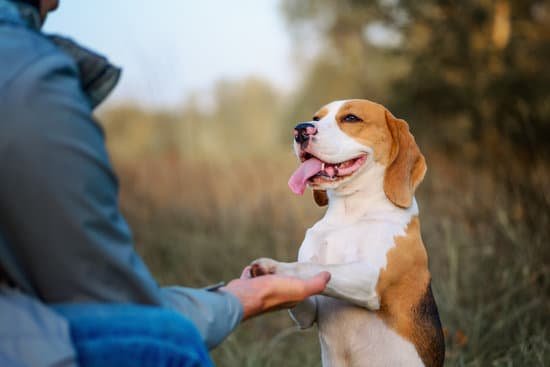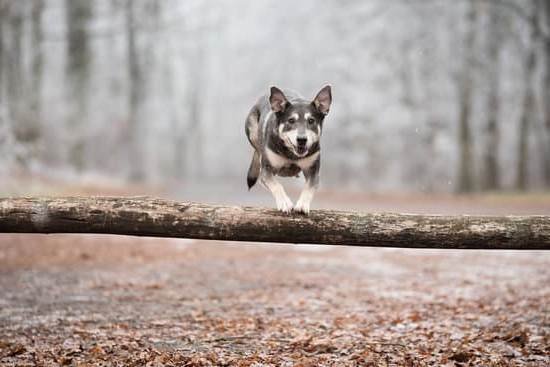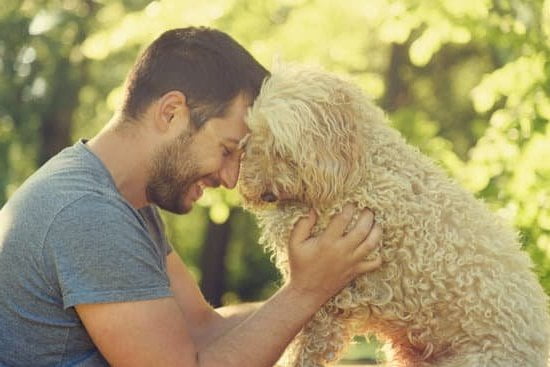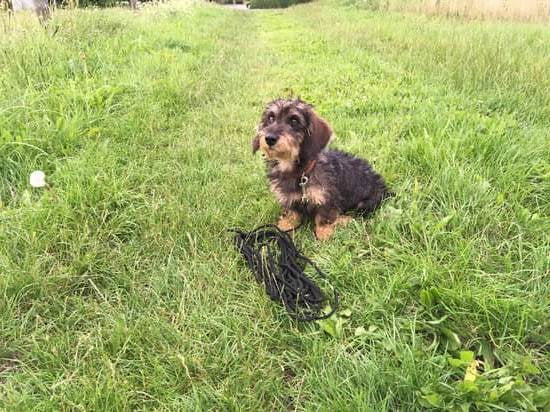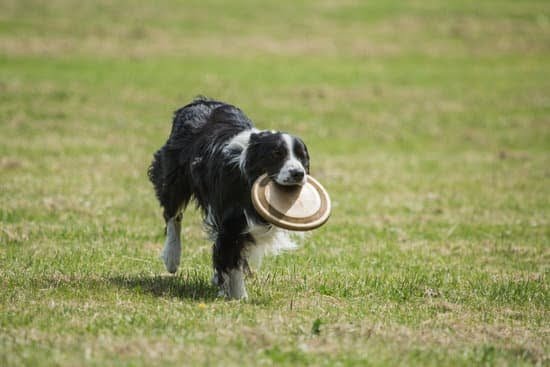Potty training small dogs can be a challenging yet essential task for pet owners. Small breeds, due to their size, often need more frequent trips outside to relieve themselves. A well-trained small dog not only makes life easier for owners but also creates a more hygienic environment for everyone involved. In this article, we will explore the key steps on how to potty train small dogs effectively.
Preparation is key in successfully potty training small dogs. Gathering supplies such as pee pads, treats, and a designated potty area in your yard or home can set the stage for a smooth training process. Establishing a routine is crucial-consistency in feeding times and scheduled potty breaks help small dogs understand when and where they should go.
Positive reinforcement plays a vital role in encouraging good potty habits in small dogs. Utilizing treats and praise when they eliminate in the correct spot reinforces positive behavior. Additionally, keeping a close eye on your furry friend and supervising them closely can help prevent accidents before they happen. By following these steps, you can pave the way for successful potty training for your small dog.
Preparation
Potty training small dogs can be a challenging task, but with the right preparation and tools, it can be a successful and rewarding experience for both you and your furry friend. One of the first steps in potty training is gathering necessary supplies and setting up a designated potty area for your small dog. Here are some essential items you will need to get started:
- Puppy pads or artificial grass patches: These are great options for indoor potty training, especially if you live in an apartment or don’t have easy access to a yard.
- Cleaning supplies: It’s important to have enzymatic cleaners on hand to quickly clean up accidents and eliminate any lingering odors that may attract your dog back to the same spot.
- Treats: You’ll need plenty of treats to reward your small dog for successful potty trips outside or on the designated potty area.
Setting up a designated potty area is crucial in establishing good habits for your small dog. Choose a quiet and easily accessible spot in your home or yard where your dog can go to relieve themselves. Make sure the area is away from their sleeping and feeding areas to avoid confusion. Consistency is key, so always take your small dog to the same spot when it’s time for them to go potty.
Once you have gathered all the necessary supplies and set up a designated potty area, it’s time to start the potty training process. By following these steps and being patient with your small dog, you can effectively teach them how to use their designated space for eliminating waste. Remember, every small dog is different, so be prepared to adjust your approach as needed based on their individual needs and behaviors towards how to potty train small dogs.
Establishing a Routine
One way to establish a routine is by taking your small dog out first thing in the morning, after meals, before bedtime, and every few hours in between. By doing this consistently, you are teaching your small dog when they should go potty, reducing the chances of accidents inside the house. Remember to praise and reward them with treats every time they do their business outside to reinforce good behavior.
In addition to setting a consistent schedule for potty breaks, it’s also helpful to feed your small dog at the same times each day. This will regulate their digestive system and make it easier for you to predict when they may need to go potty. Consistency is key when it comes to potty training small dogs, so be patient and stick to the routine you have established.
| Key Point | Importance |
|---|---|
| Consistent Feeding Schedule | Regulates digestive system |
| Consistent Potty Schedule | Reduces chances of accidents |
| Positive Reinforcement | Encourages good behavior |
Positive Reinforcement
When it comes to how to potty train small dogs, positive reinforcement can be a powerful tool in shaping their behavior. Small dogs respond well to rewards like treats and praise when they exhibit good potty habits. By associating going potty in the right place with positive outcomes, you can encourage your furry friend to repeat this desired behavior.
To effectively use positive reinforcement in potty training your small dog, it is important to have high-value treats that they love. These treats should be reserved exclusively for potty training purposes to maintain their appeal as a reward. Whenever your small dog successfully goes potty in the designated area, immediately offer them a treat accompanied by verbal praise or affection. This reinforces the connection between the action and the reward, making them more likely to repeat it.
Consistency is key when using positive reinforcement for potty training small dogs. Make sure to reward your pet every time they go potty in the right spot, gradually reducing the frequency of treats as they become more consistent with their behavior. Remember that each dog is unique, so be patient and tailor your approach based on your small dog’s preferences and responses to different types of rewards.
| Benefits of Positive Reinforcement | Effective Usage Tips |
|---|---|
| Strengthens bond between owner and dog | Use high-value treats exclusively for potty training |
| Increases motivation for desired behavior | Provide immediate rewards after successful potty trips |
| Boosts confidence in small dogs | Be consistent with rewards while gradually reducing frequency |
Supervision
Small dogs are adorable and lovable companions, but they can also present unique challenges when it comes to potty training. Supervision is key to preventing accidents and helping your small dog learn where it’s appropriate to relieve themselves. Here are some tips on how to effectively supervise your small dog to aid in the potty training process:
- Keep Your Small Dog in Sight: One of the most important aspects of supervision is ensuring that you can see your small dog at all times. This means keeping them close by when you’re at home and not allowing them free reign of the house unsupervised.
- Use Baby Gates or Playpens: If you need to step away for a short period, consider using baby gates or playpens to confine your small dog to a safe area where accidents can be easily cleaned up.
- Leash Your Small Dog Indoors: To maintain control and prevent accidents, consider tethering your small dog to you with a leash while indoors. This way, you can quickly intervene if you notice signs that they need to go potty.
By closely supervising your small dog, you’ll be able to catch any signs that they need to go potty and guide them to the designated potty area in a timely manner. Consistency in supervision will help reinforce good potty habits and accelerate the potty training process.
Remember, accidents are part of the learning process when it comes to potty training small dogs. Stay patient, consistent, and positive in your approach, and soon enough, your furry friend will become a pro at knowing where and when to go potty.
Ultimately, by establishing a routine, using positive reinforcement, incorporating crate training, and maintaining vigilance through supervision, you’ll set your small dog up for success in their potty training journey. So stay dedicated and committed to the process, keep an eye on your furry friend at all times, and celebrate each milestone along the way.
Crate Training
Benefits of Crate Training
Crate training can be an effective tool in potty training small dogs because it taps into their natural instincts as den animals. Dogs have a natural instinct to keep their sleeping area clean, and a properly sized crate can help reinforce this behavior. The crate provides a safe and comfortable space for your small dog when you are unable to supervise them, helping to prevent accidents in the house.
Introduction to Crate Training
When starting crate training with your small dog, it’s essential to make the crate a positive and inviting space. Introduce your dog to the crate gradually, using treats and praise to create a positive association with it. Start by leaving the door open and allowing your dog to explore the crate at their own pace. Once they are comfortable going in and out of the crate willingly, you can start using it for short periods while you are home.
Using Crate Training for Potty Training
One of the key aspects of using a crate for potty training is ensuring that you only leave your small dog in the crate for short periods. Dogs have limited bladder control, especially puppies, so it’s important not to leave them in the crate for longer than they can hold their bladder.
Take your small dog outside immediately after letting them out of the crate to give them an opportunity to go potty in the designated area. Gradually increase the time that your dog spends outside of the crate as they learn to hold their bladder and go potty outside.
By incorporating crate training into your potty training routine for small dogs, you can help establish good habits and accelerate the housebreaking process. Remember to be patient and consistent in your approach, and always use positive reinforcement when your small dog successfully goes potty outside. With time and practice, your small dog will learn how to potty train effectively, leading to a happier and cleaner living environment for both you and your furry friend.
Cleaning and Accidents
Accidents are an inevitable part of the potty training process, especially when it comes to small dogs. However, knowing how to effectively clean up accidents and address setbacks can make a big difference in successfully potty training your furry friend. Here are some tips to help you navigate through these challenges:
Immediate Action
When accidents happen, it’s crucial to act quickly. Use paper towels or old rags to soak up the mess, then clean the area with an enzymatic cleaner specially designed for pet stains. This type of cleaner helps eliminate odors that may attract your small dog back to the same spot. Avoid using ammonia-based cleaners, as they can actually encourage your dog to urinate in that spot again.
Consistency Is Key
During the potty training process, consistency is key. Make sure to take your small dog out frequently, especially after meals or playtime, and praise them when they go potty outside. If accidents occur indoors, resist the urge to scold or punish your dog – this can create fear and confusion. Instead, focus on reinforcing positive behaviors and redirecting your dog’s attention to the designated potty area.
Addressing Setbacks
It’s normal for setbacks to happen during potty training, so don’t get discouraged if your small dog has an accident indoors. Instead, assess what might have caused the setback – changes in routine, stress, or medical issues could be potential factors. Adjust your approach accordingly by reinforcing good habits with treats and praise, increasing supervision, and re-establishing a consistent routine.
Remember that patience and persistence are key elements in helping your small dog master potty training. With time and dedication, you’ll see progress and soon celebrate success together.
Patience and Consistency
Potty training small dogs can be a challenging task, but with patience and consistency, it is definitely achievable. One of the key aspects of successfully potty training a small dog is to establish a routine and stick to it.
This means creating a consistent feeding schedule for your dog, as well as taking them out to their designated potty area at regular intervals throughout the day. By maintaining this routine, you are helping your small dog understand when it is time to go potty and where they should do their business.
Positive reinforcement plays a crucial role in potty training small dogs. Whenever your furry friend successfully goes potty in the right spot, make sure to praise them and give them treats as a reward. Small dogs respond well to positive reinforcement, so this will help motivate them to continue exhibiting good potty habits.
Additionally, be patient with your small dog during the potty training process. Remember that accidents will happen, especially in the beginning stages of training. Stay calm and avoid scolding or punishment, as this can cause anxiety and setbacks in the training process.
Consistency is key when it comes to potty training small dogs. It is important to remain unwavering in your approach and not deviate from the established routine. By being consistent with feeding times, potty breaks, and positive reinforcement, you are helping your small dog understand what is expected of them.
Consistency will also help build good habits and reinforce the desired behavior. With time, patience, and consistency, you will see progress in your small dog’s potty training journey and eventually celebrate their success in mastering this essential skill.
Troubleshooting
Potty training small dogs can sometimes come with its own set of challenges, but with the right approach, you can overcome common potty training problems effectively. One common issue that pet owners face is accidents happening indoors despite their best efforts. If your small dog continues to have accidents inside the house, it’s essential to reevaluate your routine and supervision methods. Make sure you are taking your dog out frequently, especially after meals or playtime, to prevent accidents.
Another frequent problem in potty training small dogs is resistance to using a designated potty area. Some dogs may be hesitant to use a specific spot for elimination, which can lead to accidents in other parts of the house.
To address this issue, try making the designated area more appealing by using positive reinforcement techniques such as treats and praise when your dog uses it correctly. Consistency is key in reinforcing the idea that this spot is where they should go potty.
Additionally, some small dogs may exhibit anxiety or fear-related behaviors during the potty training process, leading to setbacks in their progress. If your dog seems stressed or anxious about going potty outside or in a particular area, try to make the experience more positive and reassuring for them.
Take time to comfort and encourage your dog during these moments and be patient with them as they learn how to potty train effectively. By addressing these common issues with patience and positive reinforcement, you can help your small dog succeed in their potty training journey effectively.
Conclusion
Potty training small dogs can be a challenging but rewarding process. By following the steps outlined in this guide, you can successfully train your furry companion to go potty in the right place. One of the most crucial aspects of potty training is understanding the importance of consistency and patience. Small dogs may take longer to learn the ropes, so it’s essential to remain consistent with your routine and always provide positive reinforcement.
Preparing for potty training by gathering necessary supplies and setting up a designated area can make the process smoother. Establishing a routine that includes regular feeding times and potty breaks will help your small dog understand when it’s time to go outside. Utilizing crate training as a tool can also assist in potty training by teaching your dog to hold their bladder until they are taken outside.
It’s important to remember that accidents will happen, especially during the initial stages of potty training. Stay patient and use accidents as opportunities to reinforce good behavior. With perseverance, positive reinforcement, and a lot of love, you’ll soon see progress in how to potty train small dogs. Celebrate every success along the way and enjoy watching your small dog become a well-trained member of your family.
Frequently Asked Questions
Are Small Dogs Harder to Potty Train?
Small dogs can sometimes be harder to potty train compared to larger breeds because of their size and energy levels. They may have smaller bladders and need more frequent bathroom breaks, requiring consistent training and patience.
How Long Does It Take to Potty Train Small Dogs?
The time it takes to potty train a small dog varies depending on the individual dog, consistency in training, and owner’s dedication. On average, it can take anywhere from a few weeks to a few months for a small dog to become fully potty trained.
Can Small Dogs Be Litter Trained?
Small dogs can be successfully litter trained, especially if they are toy breeds or live in apartments with limited outdoor space. Litter training small dogs requires providing them with a designated area indoors and gradually teaching them to use it for bathroom purposes through positive reinforcement techniques.

Welcome to the blog! I am a professional dog trainer and have been working with dogs for many years. In this blog, I will be discussing various topics related to dog training, including tips, tricks, and advice. I hope you find this information helpful and informative. Thanks for reading!

